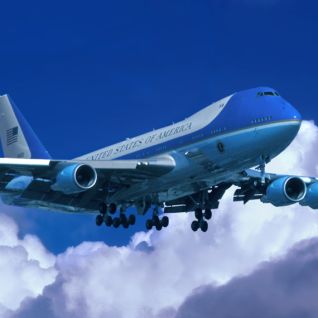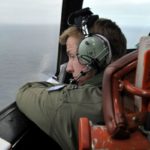
There’s something about your first glimpse of a Boeing 747 parked at the gate. I’d wager that even the most jaded traveler, hurrying through the airport after an interminable security line, pauses briefly to take it all in.
Because for the moment you see it, you know this airplane is like no other. The signature upper hump and the windows of the main deck cabin closing in toward the nose are a spine-tingling sight no other airliner can match. Even the Airbus A380, as quiet and smooth as it is, can’t match the 747’s curvaceous lines.
As you walk up to the gate, you know this airplane is taking you somewhere. You’re not cramming yourself into a dinky regional jet to fly across your state. No, it’s likely you’re off across the ocean to another country. Hopefully, it’s the start of a vacation, or maybe it’s taking you home after a joyous time. Even if you’re stuck in economy, the high ceilings and wide cabin bring a feel of comfortable spaciousness you don’t always get in the air.
I was 12 when I took my first flight on a 747. My family and I flew Air New Zealand from Los Angeles to London Gatwick to start my first trip out of the US. I’d been an aviation geek since birth, but I had longed to fly on the jumbo jet. From the moment we boarded, I was not disappointed. I remember my first sight of the iconic spiral staircase (this was back in the 80s when it was still a spiral) and how excited I felt as a cabin larger than my living room lifted into the air above the Pacific Ocean. It was magical.
It’s long been my favorite plane in the skies, which is why I’m so distressed at the recent news that Boeing is considering ending production of the Queen of the Skies. After building 1,500 747s in multiple versions for half a century, Boeing said it was planning to build only six planes a year. Even the new 747-8, which Boeing introduced in 2011, hasn’t been enough to revive the production line.
Whenever that inevitable moment comes it will be a sad end to a glorious era. The 747’s immense size dwarfed other commercial aircraft when it was first unveiled in 1968 (its first commercial flight was two years later). Capable of carrying 500 or so people (depending on configuration), it was so big that Boeing had to build one of the world’s largest buildings just to manufacture it. And it remained the largest aircraft on the skies until Airbus introduced the A380 in 2005. It’s still flying, and will be for some time (British Airways still has a large 747 fleet), so get your rides in while you can.
CNET






